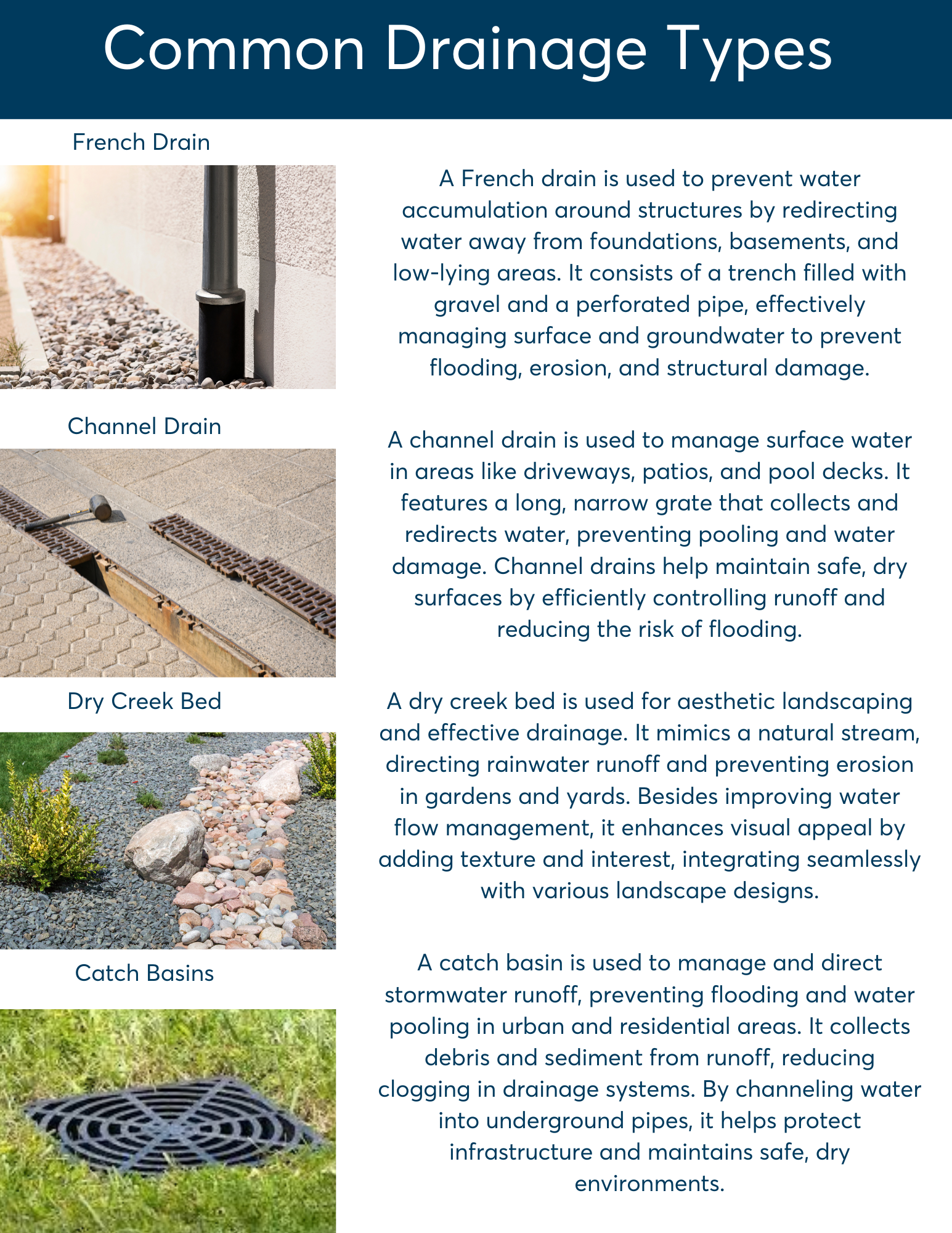Poor drainage in your landscape can wreak havoc on your lawn, garden, and even your home's foundation, but fear not! There are solutions aplenty to tackle these issues and restore your outdoor space to its former glory.
If you're noticing standing water or soggy patches in your lawn, it's time to take action. Proper slope and diversion techniques, along with regular aeration, can help prevent water from pooling and suffocating your grass. Core aeration, in particular, offers a host of benefits, from enhancing water penetration to stimulating healthy root growth.
For areas where lawn drainage problems persist, it may be worth reimagining the space. Consider transforming troublesome spots into seating areas, planting beds, or even water features. Pathways with stepping stones or steel edging can help redirect foot traffic and preserve your lawn.
When it comes to drainage solutions, there's no shortage of options to explore:
- French drains are ideal for redirecting runoff along lawn edges or hardscape borders.
- Channel drains are perfect for driveways, patios, and pool decks, efficiently collecting and diverting water.
- Dry creek beds offer both aesthetic appeal and functionality, mimicking natural creek beds to capture and redirect surface runoff.
- Rain gardens provide a beautiful way to manage excess water on-site, with specially chosen plants and gravel filtration systems.
- Catch basins are effective for low spots where water accumulates, channeling it away from problem areas.
- Dry wells serve as underground reservoirs for redirecting drainage when traditional methods aren't feasible.
- Subsurface grid drains are ideal for flat areas lacking natural slope, allowing water to drain vertically and prevent pooling.
Additionally, planting groundcovers and spreading plants can help prevent erosion and runoff while adding a burst of color to your landscape. By addressing drainage issues head-on and implementing strategic solutions, you can enjoy a lush, healthy outdoor oasis year-round.
